Museums & Institutions
Stunning New Warsaw Museum Draws Massive Crowds
The sleek Thomas Phifer-designed building represents a new beginning for Poland's arts and culture scene.
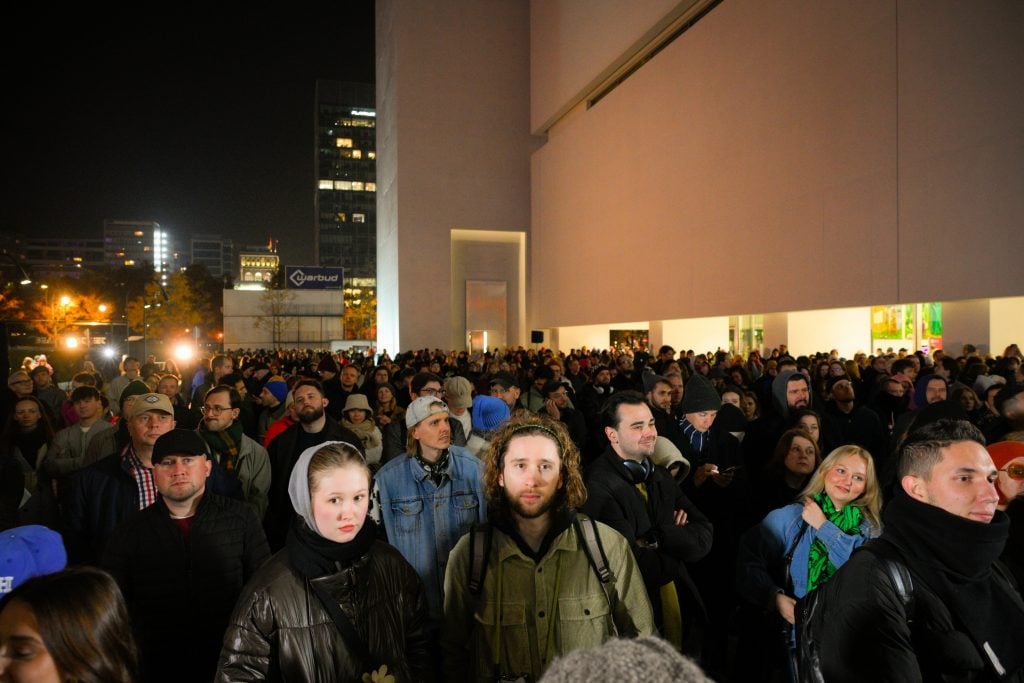
The sleek Thomas Phifer-designed building represents a new beginning for Poland's arts and culture scene.

Jo Lawson-Tancred

A sleek, modernist new museum now stands out against Warsaw’s skyline. Though it is not without its critics, the new Museum of Modern Art has been heralded by some as an opportunity for the city to redefine itself as a forward-facing democracy, 35 years after the fall of the Berlin wall. It has already proven a hit with locals, welcoming 50,000 visitors in its first weekend.
The museum, which was established in 2005, has been a nomadic enterprise up to this point, shifting into temporary spaces every couple of years. Its new permanent home situated it in the center of the city, right by one of its best-known landmarks, the imposing Soviet-era Palace of Culture and Science. The five-year project cost the city $175 million and is intended to reflect Poland’s growing arts and culture scene as the country rebounds from Communist rule.
“It is very important that this building is located opposite the Palace of Culture and Science and symbolically changes the center,” said the museum’s director Joanna Mytkowska.
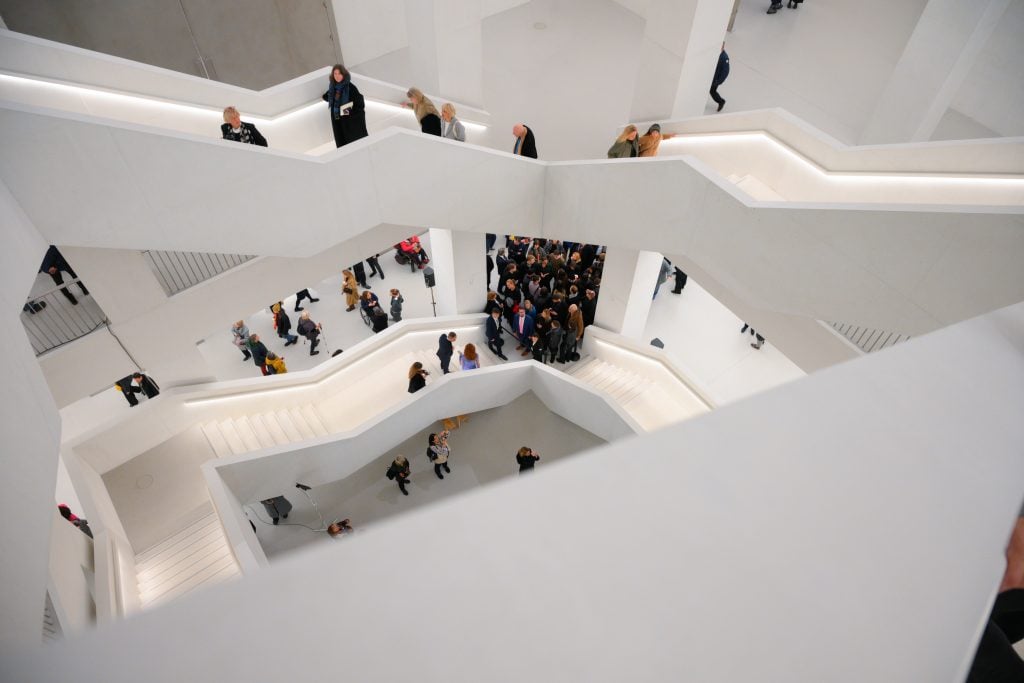
Visitors are seen on the evening of the opening of the new Museum of Modern Art (Muzeum Sztuki Nowoczesnej) in Warsaw, Poland on 25 October, 2024. (Photo by Jaap Arriens/NurPhoto via Getty Images)
The long, rectangular, white building is the creation of New York architects Thomas Phifer and Partners in collaboration with local Warsaw studio APA Wojciechowski. Phifer has worked on several museums in the U.S. prior to this, including the North Carolina Museum of Art, the Corning Museum of Glass, and the Glenstone Museum expansion in Potomac, Maryland.
“The museum is what I would call a magic box. There is a bit of mystery to it,” said Phifer at last week’s opening, according to AP. “You don’t really understand this work until you come inside and experience it with the art.”
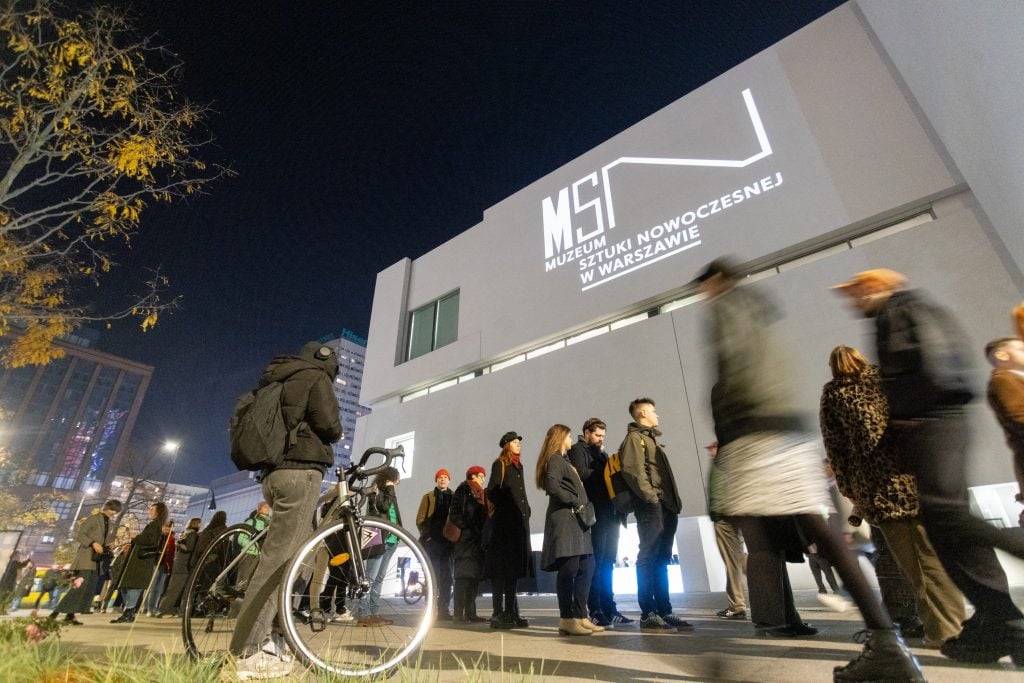
People line up to enter to the new building of Museum of Modern Art in Warsaw, Poland on the night of opening October 25, 2024. Photo: Wojtek Radwanski / AFP via Getty Images
Across six floors, of which four are above ground, is an overall interior space of 215,000 square-feet that is drenched in natural light—an intentional design choice to echo Poland’s dedication to democracy. Inside, visitors will find a cinema, an auditorium, a shop and café, educational spaces, and storage facilities, as well as 50,000 square-feet of gallery spaces.
Some residents of Warsaw, however, view the museum’s design differently. “We live here and I can’t look at it,” said one women in an online vox pop. “”It’s a bunker.” Another man compared it to a Lego brick.
Another woman defended the building but echoed many other commentators in suggesting it did not naturally complement the Palace of Culture and Science, a stately high-rise built by a Russian architect in 1955. Though it is a symbol of Soviet rule, it has also become an important icon of the city.
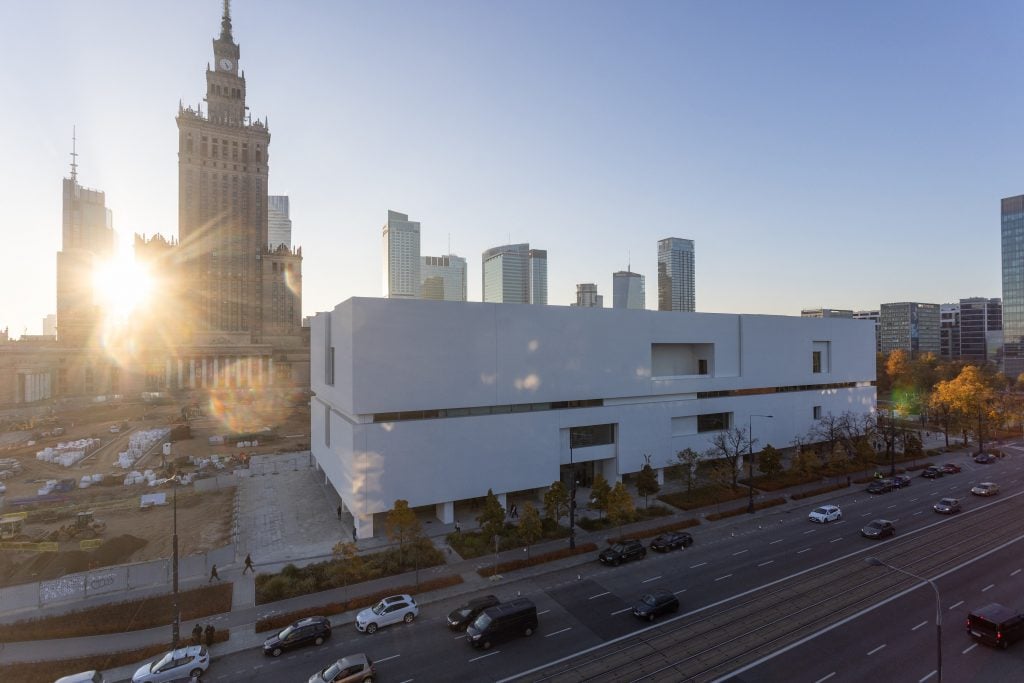
The new building of Warsaw Museum of Modern Art is seen over the street with the Soviet era Palace of Culture and Warsaw’s downtown skyline in background. Photo: Wojtek Radwanski/ AFP via Getty Images.
Meanwhile, the city’s mayor Rafał Trzaskowski sees the backlash as necessary teething troubles. “Every large project that has been built from scratch in the world, such as the Pompidou Centre in Paris, the Guggenheim in Bilbao or the pyramid in the Louvre, has stirred up controversy,” he said. He looks forward to the exhibition program stirring up yet more mixed reactions.
At the opening of the museum on October 24, he added that museum marks “historic moment” for Warsaw.
“There has not been a place like this in Warsaw for decades, a place that would be created from scratch precisely to promote Polish art, which is spectacular in itself,” Trzaskowski told EuroNews.
Naysayers are being given the opportunity to get acquainted with the imposing new monument. Until November 10, the museum is welcoming curious locals to visit a packed program of over 100 free events, including workshops, concerts, and panels. As of right now, it only has a few works of art installed; it will eventually have as many as 2,500 works on display when it opens in full in February 2025.
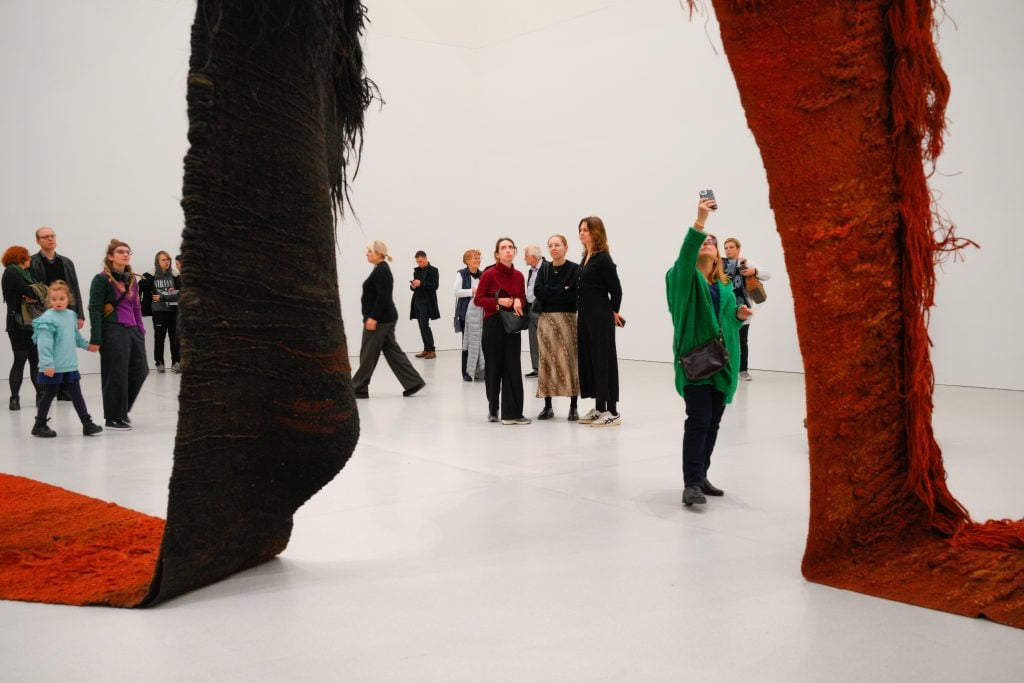
Visitors look at a sculpture by Magdalena Abakanowicz at the new Museum of Modern Art in Warsaw, Poland on 25 October, 2024. Photo: Jaap Arriens/ NurPhoto via Getty Images.
Currently on view are nine large-scale works by women artists, including a fibrous textile by the late Magdalena Abakanowicz that hangs from the ceiling. Dwarfing the spectators, the work takes on a surprising monumentality, its rusty orange red set in stark contrast to the pristine white walls.
Also on display are works from Polish artist Alina Szapocznikow, who fled to Prague and then Paris during World War II. She is known for intimate plaster casts of her own body that speak to its capacities for both pleasure and suffering.
Among the international artists on view are Sandra Mujinga from Norway, whose tent-like construction of suspended scraps of red fabric appears uncannily animalistic. Elsewhere is a flat arrangement of abstracted, anthropomorphic forms made of interlocking, brightly-colored slats by the Argentinian artist Mariela Scafati.